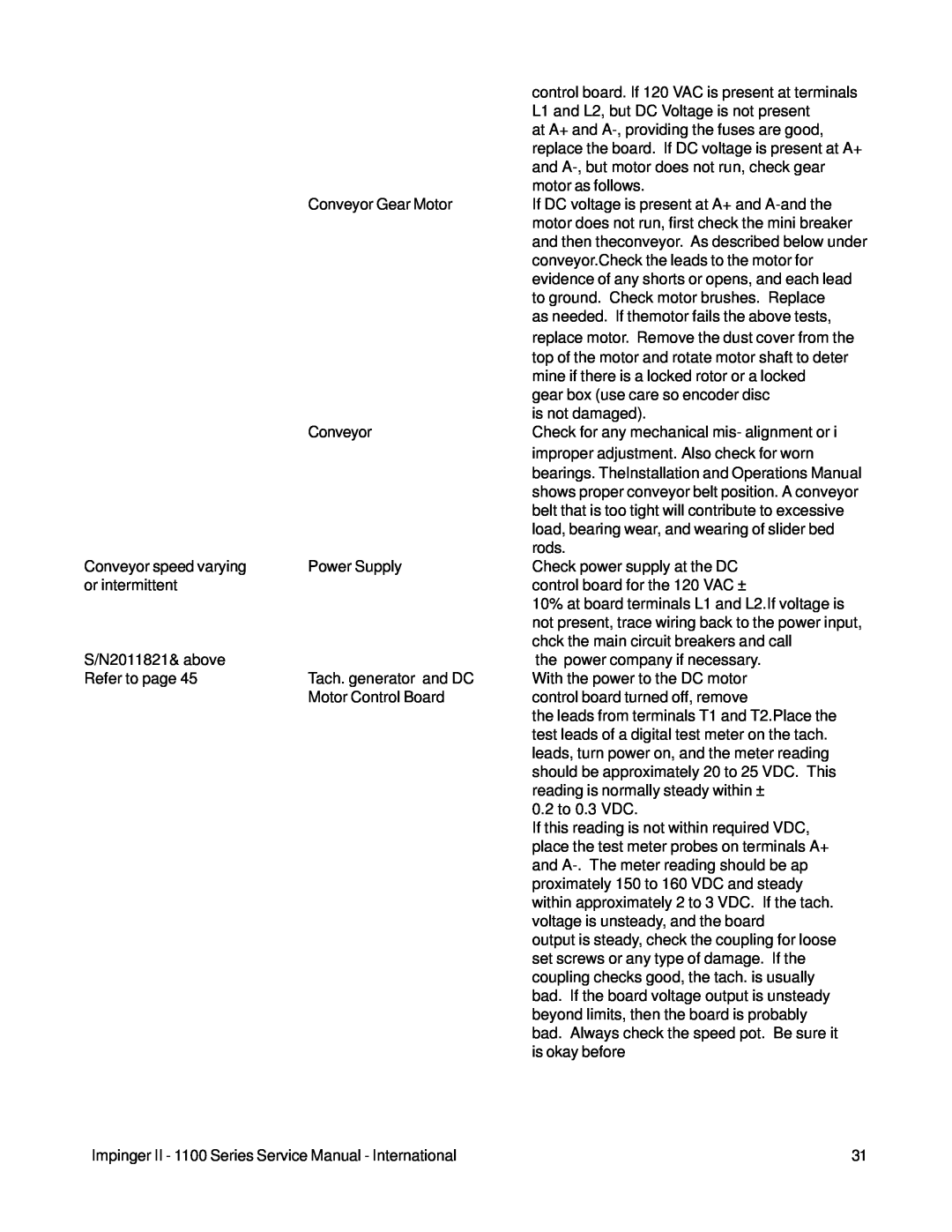|
| control board. If 120 VAC is present at terminals |
|
| L1 and L2, but DC Voltage is not present |
|
| at A+ and |
|
| replace the board. If DC voltage is present at A+ |
|
| and |
|
| motor as follows. |
| Conveyor Gear Motor | If DC voltage is present at A+ and |
|
| motor does not run, first check the mini breaker |
|
| and then theconveyor. As described below under |
|
| conveyor.Check the leads to the motor for |
|
| evidence of any shorts or opens, and each lead |
|
| to ground. Check motor brushes. Replace |
|
| as needed. If themotor fails the above tests, |
|
| replace motor. Remove the dust cover from the |
|
| top of the motor and rotate motor shaft to deter |
|
| mine if there is a locked rotor or a locked |
|
| gear box (use care so encoder disc |
|
| is not damaged). |
| Conveyor | Check for any mechanical mis- alignment or i |
|
| improper adjustment. Also check for worn |
|
| bearings. TheInstallation and Operations Manual |
|
| shows proper conveyor belt position. A conveyor |
|
| belt that is too tight will contribute to excessive |
|
| load, bearing wear, and wearing of slider bed |
|
| rods. |
Conveyor speed varying | Power Supply | Check power supply at the DC |
or intermittent |
| control board for the 120 VAC ± |
|
| 10% at board terminals L1 and L2.If voltage is |
|
| not present, trace wiring back to the power input, |
|
| chck the main circuit breakers and call |
S/N2011821& above |
| the power company if necessary. |
Refer to page 45 | Tach. generator and DC | With the power to the DC motor |
| Motor Control Board | control board turned off, remove |
|
| the leads from terminals T1 and T2.Place the |
|
| test leads of a digital test meter on the tach. |
|
| leads, turn power on, and the meter reading |
|
| should be approximately 20 to 25 VDC. This |
|
| reading is normally steady within ± |
|
| 0.2 to 0.3 VDC. |
|
| If this reading is not within required VDC, |
|
| place the test meter probes on terminals A+ |
|
| and |
|
| proximately 150 to 160 VDC and steady |
|
| within approximately 2 to 3 VDC. If the tach. |
|
| voltage is unsteady, and the board |
|
| output is steady, check the coupling for loose |
|
| set screws or any type of damage. If the |
|
| coupling checks good, the tach. is usually |
|
| bad. If the board voltage output is unsteady |
|
| beyond limits, then the board is probably |
|
| bad. Always check the speed pot. Be sure it |
|
| is okay before |
Impinger II - 1100 Series Service Manual - International | 31 |
